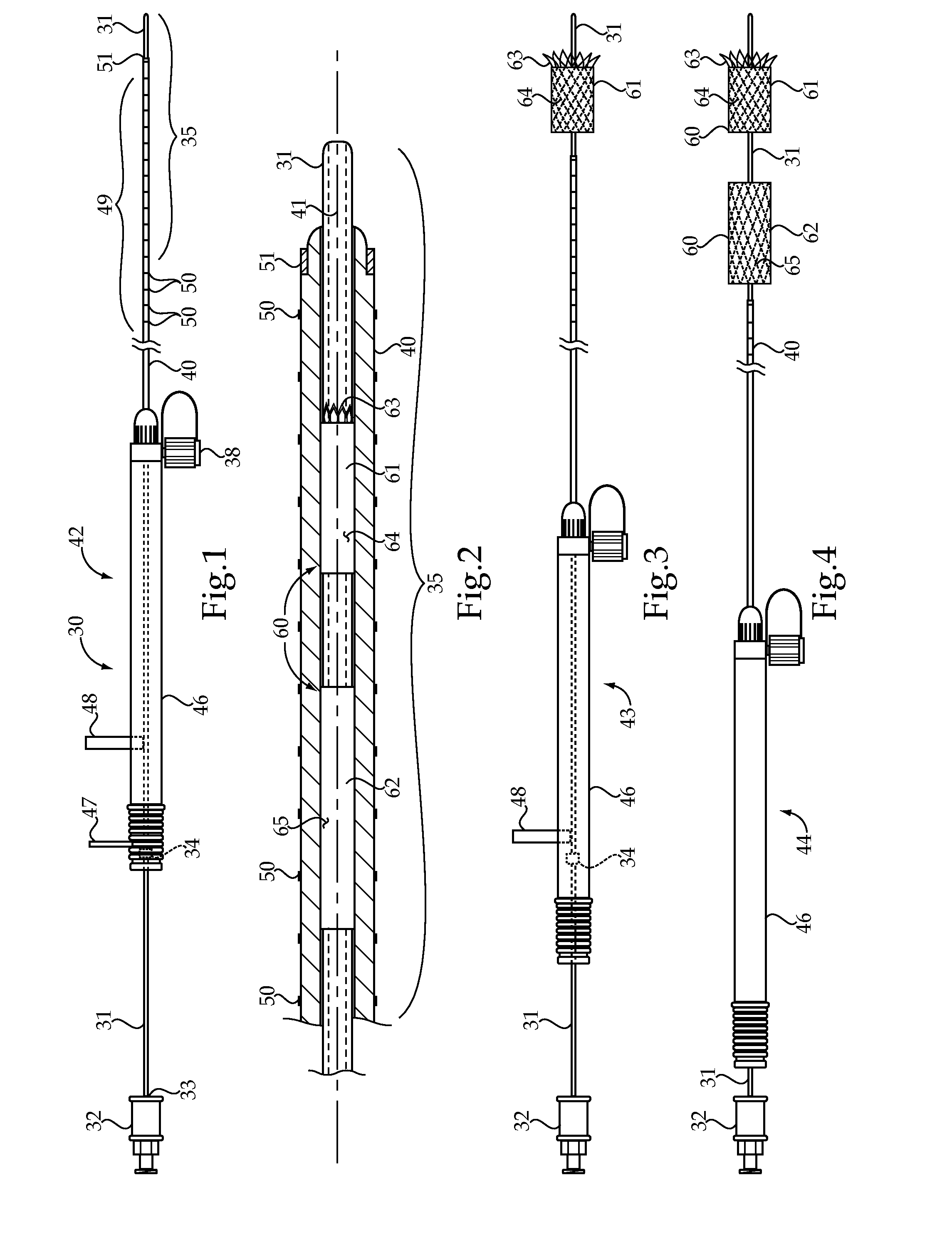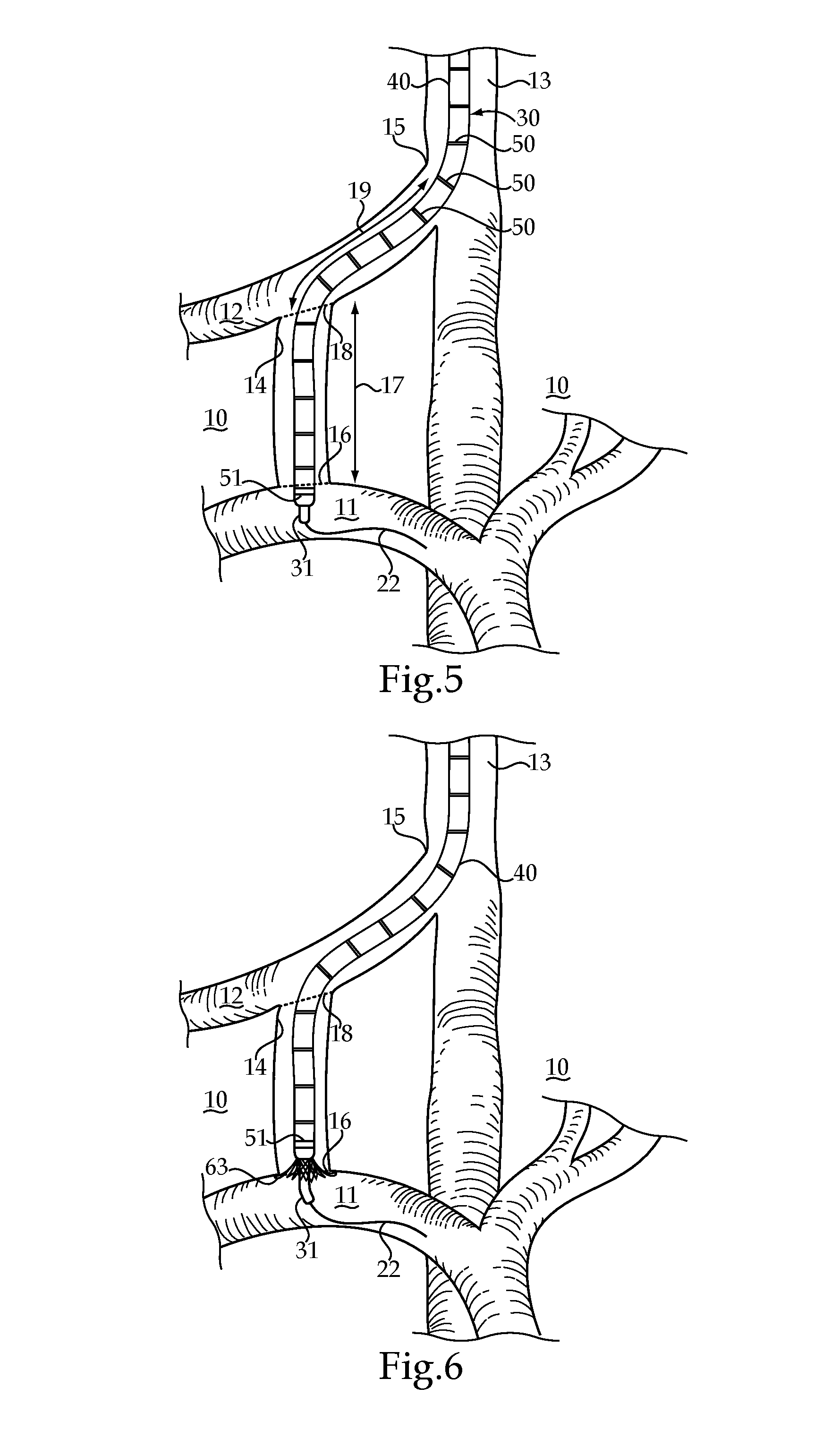Duet stent deployment system and method of performing a transjugular intrahepatic portosystemic shunting procedure using same
a deployment system and stent technology, applied in the field of stent deployment system, can solve the problems of increasing costs, increasing costs, increasing procedure time and complication risks for patients, and high cost of procedures
- Summary
- Abstract
- Description
- Claims
- Application Information
AI Technical Summary
Benefits of technology
Problems solved by technology
Method used
Image
Examples
Embodiment Construction
[0015]Hospitals that perform TIPS procedures must normally inventory stent introducers with stents having a variety of lengths to accommodate both physician discretion in deciding a stenting length needed for a particular patient, as well as accommodating the substantial variety in different lengths among patients from a junction of the shunt with the portal vein to a junction of the hepatic vein with the vena cava. Because of the three dimensional structure of these passageways, It can often be time consuming to determine precise stenting length requirements for each individual patient. In many instances, the physician will implant a first sleeve covered stent in the newly made shunt with a first stent deployment device and then reenter with a second stent deployment device to place a second stent to extend from the shunt through the hepatic vein to the junction with the vena cava. While the first stent length is somewhat typical among patients, and being on the order of about four...
PUM
 Login to View More
Login to View More Abstract
Description
Claims
Application Information
 Login to View More
Login to View More - R&D
- Intellectual Property
- Life Sciences
- Materials
- Tech Scout
- Unparalleled Data Quality
- Higher Quality Content
- 60% Fewer Hallucinations
Browse by: Latest US Patents, China's latest patents, Technical Efficacy Thesaurus, Application Domain, Technology Topic, Popular Technical Reports.
© 2025 PatSnap. All rights reserved.Legal|Privacy policy|Modern Slavery Act Transparency Statement|Sitemap|About US| Contact US: help@patsnap.com



